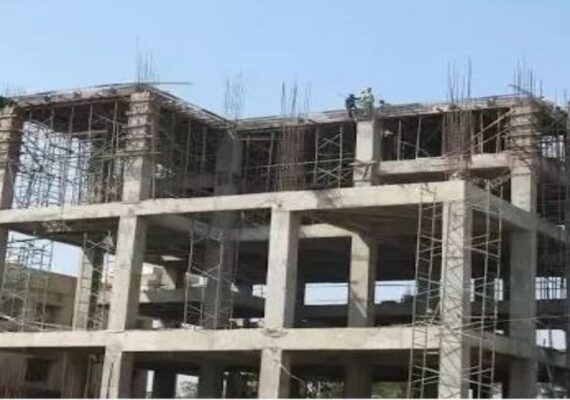Moment Resisting Frames; Moment Resisting Frame Vs Braced Frame
Moment Resisting Frames; Moment Resisting Frame Vs Braced Frame
What is Moment Resisting Frames?
Moment resisting frames are structural systems that resist lateral forces like wind or seismic loads through the bending of beams and columns. The rigid connections between members allow the frame to act as a unit and resist moments.
The major types are ordinary moment frames and special moment frames, which differ in detailing requirements that affect ductility and seismic performance.
Moment frames can be constructed from steel, concrete, or masonry. Their main advantages are ductility and open architectural space. Disadvantages include potential damage in major earthquakes. Special moment frames are commonly used in seismic regions because they are designed to yield in a ductile manner.
Moment Resisting Frames & Earthquakes
Moment resisting frames are a type of building structure that is designed to resist lateral forces from earthquakes. They consist of beams and columns that are rigidly connected to each other, typically through welded or bolted connections.
When lateral forces are applied to a moment frame, the beams and columns bend and resist the force through shear and flexure. The rigid connections allow the frame to act as an integrated unit and develop the moment strength needed.
There are different categories of moment frames based on the level of detailing and ductility: ordinary moment frames, intermediate moment frames, and special moment resisting frames.
💥🎁 Christmas & Year-End Deals On Amazon !
Don't miss out on the best discounts and top-rated products available right now!
🛒 Shop Now and Save Big Today!*As an Amazon Associate, I earn from qualifying purchases.
Special moment frames have the most stringent detailing requirements to provide ductile behavior under large seismic loads. This includes use of reduced beam sections, welded flange-bolted web connections, and continuity plates. The ductile detailing enables the frame members to yield in a controlled manner when subjected to extreme loads.
Compared to braced frames and shear walls, moment frames provide more flexibility and can accommodate architectural features like large window openings. They effectively dissipate seismic energy through cyclic inelastic behavior in the beams and connections.
However, they are generally more expensive than other lateral force resisting systems. Proper design and construction is critical to ensure the intended ductile behavior.
Moment Resisting Frame Vs Braced Frame
Moment resisting frames and braced frames are two common lateral force resisting systems used in building structures. The main difference lies in how they resist lateral loads – through frame action vs diagonal bracing members.
Moment frames consist of beams and columns connected by rigid joints. Lateral loads induce bending moments and shear forces along the members and joints, which provide resistance through their inherent stiffness.
Moment connections allow the development of end moments. They are more ductile and better at dissipating seismic energy.
💥🎁 Christmas & Year-End Deals On Amazon !
Don't miss out on the best discounts and top-rated products available right now!
🛒 Shop Now and Save Big Today!*As an Amazon Associate, I earn from qualifying purchases.
In contrast, braced frames rely on diagonal members like cross-bracing to create a truss action. The braces carry lateral forces directly as axial tension and compression. Braced frames provide greater lateral stiffness but have less ductility. They transfer the lateral loads more directly to the foundation.
Moment frames can accommodate more architectural openings but are more expensive to construct due to field welding or bolting of connections.
Braced frames are generally more economical and simpler to erect. For low-rise buildings, braced frames may be preferred. Moment frames are more suitable for mid to high-rise structures.
The two systems are sometimes used together to optimize structural performance. Eccentrically braced frames attempt to combine the benefits of both – ductility of moment frames and stiffness of concentric bracing.
Difference Between Ordinary And Special Moment Resisting Frame
Ordinary moment resisting frames (OMRFs) and special moment resisting frames (SMRFs) are two categories of ductile moment frames used to resist lateral seismic forces. The key difference lies in the detailing and construction requirements.
OMRFs have relatively simple and non-ductile detailing. Beam-column joints are not specifically designed for ductility. Shear reinforcement limits are lower and there are no restrictions on welded joints. OMRFs are expected to undergo limited inelastic deformations during an earthquake.
💥🎁 Christmas & Year-End Deals On Amazon !
Don't miss out on the best discounts and top-rated products available right now!
🛒 Shop Now and Save Big Today!*As an Amazon Associate, I earn from qualifying purchases.
In contrast, SMRFs incorporate ductile detailing as per codes like AISC 341 and ACI 318 to provide ductile inelastic behavior. This includes reduced beam sections, welded unreinforced flanges, bolted webs, panel zones, and column stiffeners. Rigorous weld quality control is required.
SMRFs are designed to undergo large inelastic rotations through flexural yielding. Member proportions and reinforcing limits aim to confine inelastic actions to predetermined regions. Capacity design ensures ductile flexural failures before brittle shear failures.
The more robust detailing allows SMRFs to have higher response modification factors R. However, they are more expensive to fabricate and construct. SMRFs are preferable in high seismic zones, while OMRFs can be used in low to moderate seismicity.

